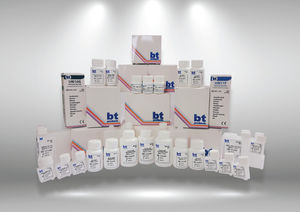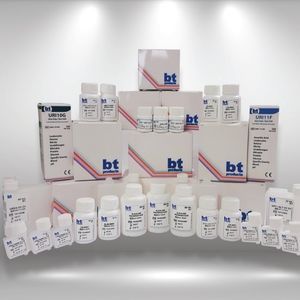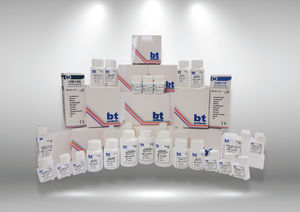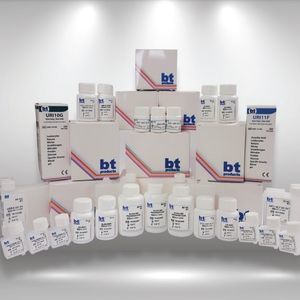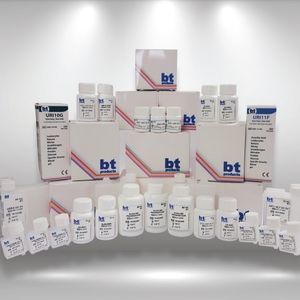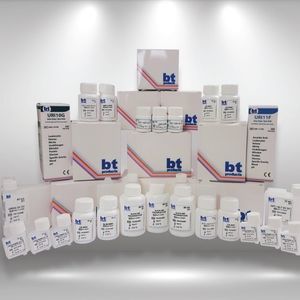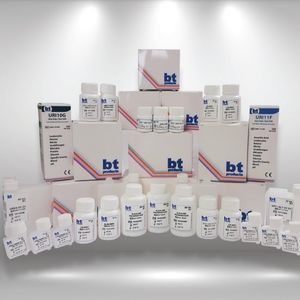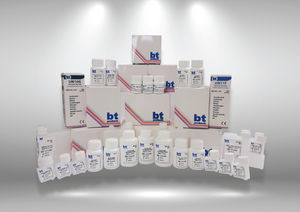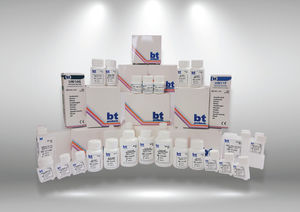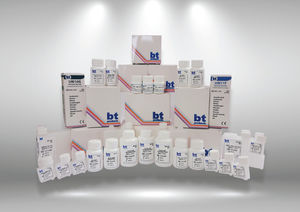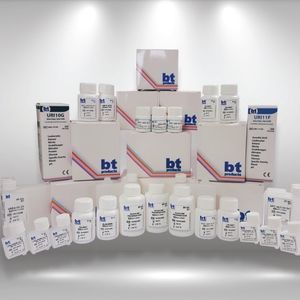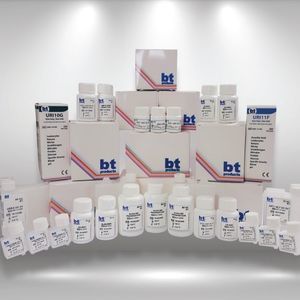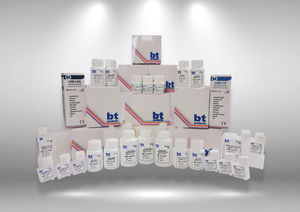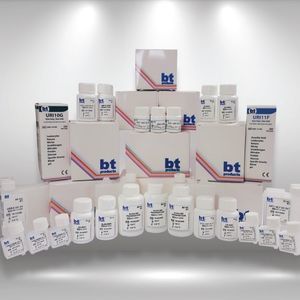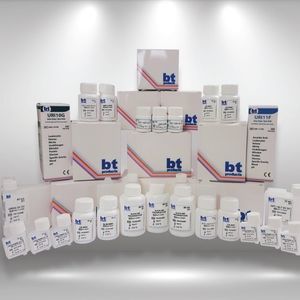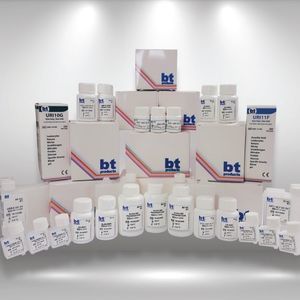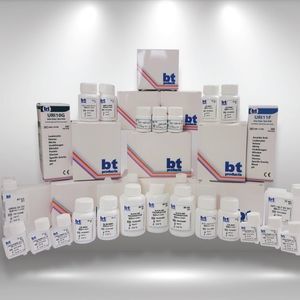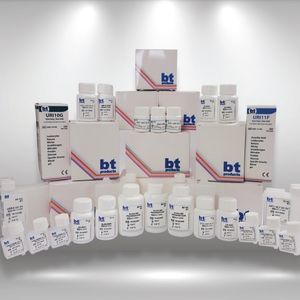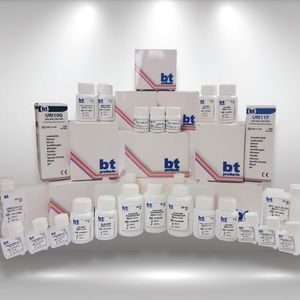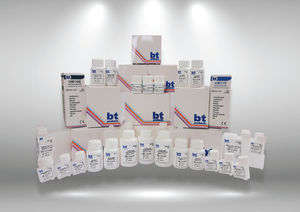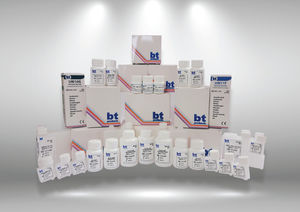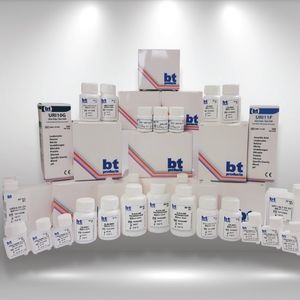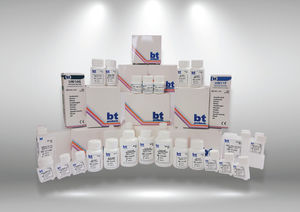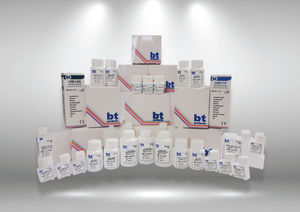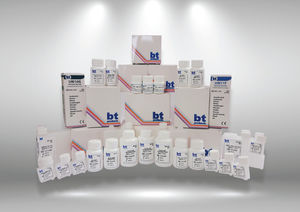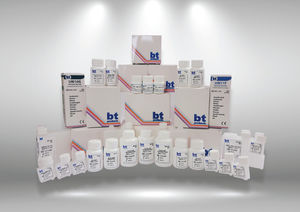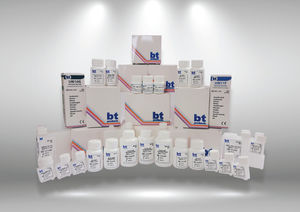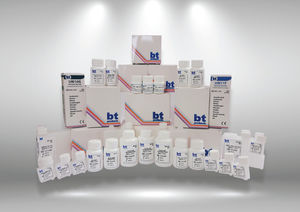
- Laboratory
- Laboratory medicine
- Solution reagent
- BILIMSEL TIBBI ÜRÜNLER
IgM reagent kit IGM-30 seriessolutionfor clinical chemistryIgA
Add to favorites
Compare this product
fo_shop_gate_exact_title
Characteristics
- Type
- solution
- Applications
- for clinical chemistry
- Tested parameter
- IgA, IgM
- Storage temperature
Max.: 8 °C
(46 °F)Min.: -20 °C
(-4 °F)
Description
For quantitative determination of immunglobulin IgM in human serum or plasma.
PRINCIPLE OF THE METHOD
The IgM is a quantitative turbidimetric test fort he measurement of IgA in human serum or plasma. Anti human IgM antibodies when mixed with samples containing IgM ,form insoluble complexes. These complexes cause an absorbance change ,dependent upon the IgM concentration of the patient sample,that can be quantified by comparison from a calibrator of known IgM concentration.
REAGENTS
R1 (DILUENT): Tris buffer 20 mmol/L, PEG 8000, pH 8.3. Sodium azide 0.95 g/L.
R2 ((ANTIBODY): Goat serum, anti human IgM pH 7.5. Sodium azide 0.95 g/L.
CALIBRATION (Optional)
Serum Proteins Calibrator is recommended.
REAGENT PREPARATION
Reagents are ready to use.
INTERFERENCES
Bilirubin (20 mg/dL), hemoglobin (10.0 g/dL), lipemia (5g/L) do not interfere. Rheumatoid factor may interfere at 900 IU/mL.
PROCEDURE
Wavelength : 340 nm(320-360 nm)
Working temperature : 37°C
Optical path : 1 cm
Assay type : Turbidimetry
Direction : Increasing
1. Bring the reagents and the photometer (cuvette holder) to 37°C.
2. Adjust the instrument to zero with distilled water. 3. Pipette into a test tube.
4. Mix and read the absorbance (Abs.1) after the sample or calibrator addition.
5. Pipette into a test tube
6. Mix well and read the absorbance (Abs.2) of calibrators and sample exactly 2 minutes after the R2 addition.
CALCULATION
Calculate the absorbance difference (Abs.2-Abs.1) of each point of the calibration curve and plot the values obtained against the IgM concentration of each calibrator dilution.
Catalogs
No catalogs are available for this product.
See all of BILIMSEL TIBBI ÜRÜNLER‘s catalogsOther BILIMSEL TIBBI ÜRÜNLER products
Universal Bottled Clinical Chemistry Reagents
Related Searches
- Solution reagent kit
- Diagnostic reagent kit
- Laboratory reagent kit
- Protein reagent kit
- Enzyme reagent kit
- Histology reagent kit
- Dye reagent
- Buffer solution reagent kit
- Antibody
- Clinical chemistry reagent
- Quality control reagent kit
- Clinical reagent kit
- Virus reagent kit
- Test strip
- Tissue reagent kit
- Electrolyte reagent kit
- Colorimetric reagent kit
- Enzymatic reagent kit
- Enzyme reagent
- Urine test strip
*Prices are pre-tax. They exclude delivery charges and customs duties and do not include additional charges for installation or activation options. Prices are indicative only and may vary by country, with changes to the cost of raw materials and exchange rates.



